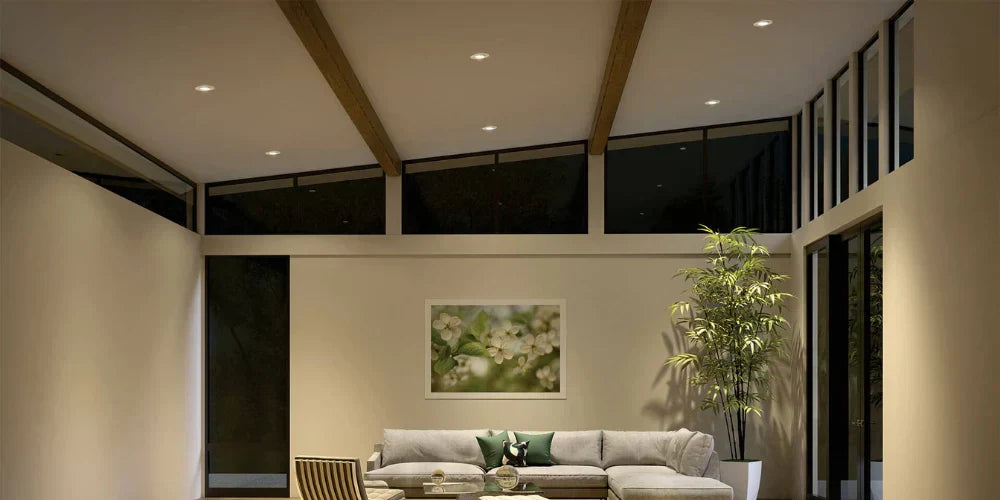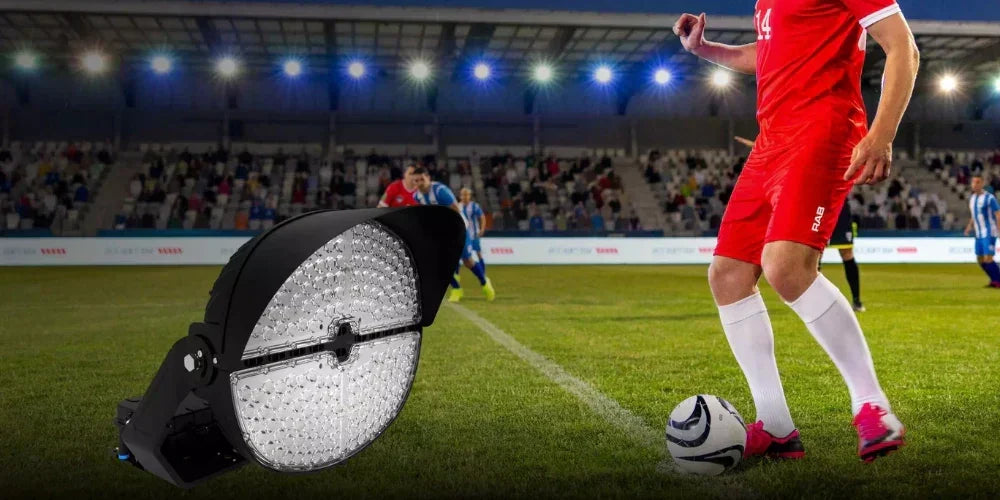A vaulted or sloped ceiling is a beautiful architectural feature that can make a room feel open and grand. But it’s also a notorious lighting nightmare.
If you install a standard, flat recessed light on a sloped ceiling, the light beam won't point down at your floor. It will shoot across the room at an angle, creating a blinding "hot spot" on the opposite wall and leaving the living area below in the dark.
This is a common and frustrating problem, but it has two excellent, professional-grade solutions. Here’s how to properly use recessed lighting for a sloped ceiling to get beautiful, functional light.
The Problem: Why Standard Downlights Fail on an Angle
Standard recessed lights are designed for flat ceilings. Their only job is to shine light straight down. When you install them on an angle, the light beam follows that angle. This not only fails to light your room, but it also creates harsh glare, as the exposed bulb is now aimed at eye level, not at the floor.
To light your room properly, you must choose a fixture designed to correct for the ceiling's angle.
Solution 1: Adjustable Gimbal Recessed Lighting
An adjustable gimbal recessed light is a fixture with a lamp head that can be physically aimed and rotated within the trim.

How it Works: You install the fixture and then manually pivot the internal light to aim it straight down. This flexibility also makes gimbals great for highlighting architectural details, art, or a feature wall.
Best For: Gimbals are the most flexible option and are the best solution for very steep ceilings (9/12 pitch or more), where you may need to aim the lights from one side of the peak to the other.
Shop Gimbal Recessed Lighting ►
Solution 2: Sloped Ceiling Trims (The Seamless Fix)
This is the more modern and seamless solution. A sloped ceiling trim (often sold as a "wall wash / sloped ceiling" trim) is a purpose-built fixture that looks fixed and clean, but has specialized optics inside.

How it Works: The trim has special optics that bend the light, allowing it to correct for the ceiling's angle. This creates a clean cone of light that isn't cut off by the trim. The fixture looks flush, but the light is correctly aimed straight down.
Best For: This is the recommended approach for most common ceiling pitches (from 3/12 to 8/12), as it provides a clean, architectural look.
A Pro's Guide to Placement Based on Ceiling Pitch
Properly lighting a vaulted ceiling isn't just about the right fixture; it's about knowing your ceiling's pitch. The steepness of your slope dictates the type of light you need and where to place it.
1. Low Pitch (0/12 to 2/12, or 0-10°)
You're in luck. For a gentle slope, you can use standard downlight modules with standard trims. The angle is not severe enough to cause significant glare or light loss.
Shop LED Retrofit Can Lights ►
Shop Canless Recessed Lighting ►
2. Medium Pitch (3/12 to 8/12, or 11-35°)
This is the most common range for vaulted ceilings, and it requires a special solution.
Fixture: Use a Sloped Ceiling Trim (or Wall Wash Trim).
Placement: This is the most critical rule: The trim must be aimed to point down the slope (towards the nearest low wall). This means the "eyelid" or angled part of the trim directs the light correctly.


3. High Pitch (9/12 to 12/12, or 36-45°)
This steepness is not the ideal situation for standard downlighting. You have two professional options:
Use Adjustable Gimbals: This is the best solution. It allows you to aim the lights from one side of the peak to the other for more even, balanced lighting.
Reposition Your Lights: If you must use fixed sloped trims, position the lights nearer to the lower wall (about one-third of the gable's height away).

Final Tip: Don't Forget Brightness
For any ceiling higher than 10 feet, make sure your fixtures are powerful enough. A good rule of thumb is to choose lights that produce a brightness of 1000 lumens or more to ensure bright, useful light reaches the floor.





